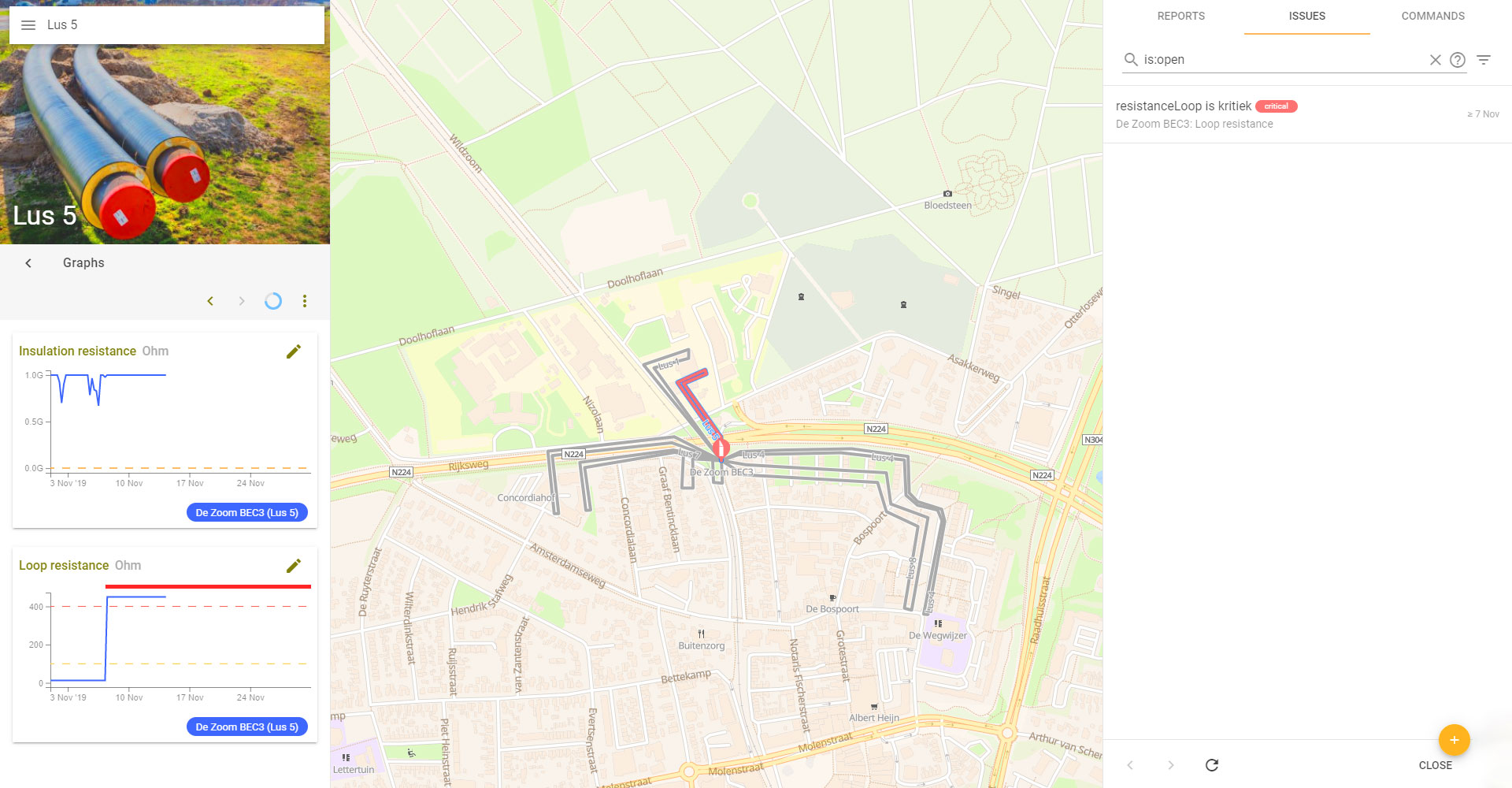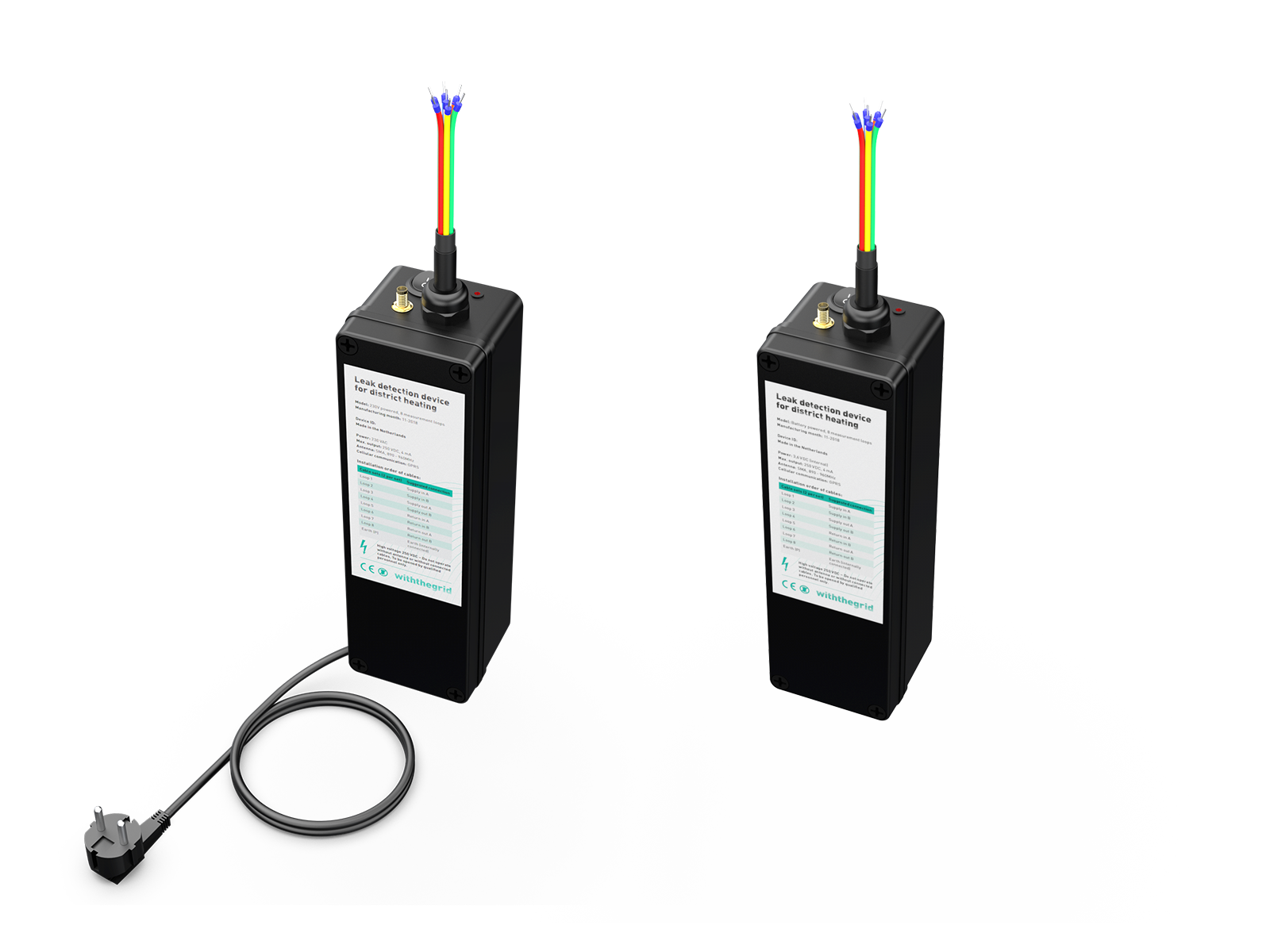
Why leak detection sensors?
- Direct detection of excavation damage
- Continuous monitoring of pipes during warranty period (and beyond)
- Savings of operational man-hours
- Reduced administrative burden (direct and automatic historical measurement reports incl. audit trail)
- Extended lifetime of pipes
- Less serious damages and lower damage costs

Specifications
Sensor
- Insulation resistance (Range: 5k Ohm – 1G Ohm, Accuracy: ± 10% + 0.1% of range)
- Loop resistance (Range: 0-500 Ohm, Accuracy: ± 2% + 0.1% of range)
- Voltage: 10V (Imax 10mA) – 250V DC (Imax 4mA)
- IP-rating: 65
- Communication protocol: GPRS or NB-IoT
- Remote adjustment of measurement frequency (1X/minute to 1X/week)
- Remote pausing of measurements during works
- Does not need to be physically decoupled during welding
Number of measurement loops:
- 4 (for 1- or 2-wire measurement systems)
- 8 (for 4-wire measurement systems)
Power:
- Mains power (230V)
- Battery (without replacement 6 years with 4X/day measurement)
According to the norms:
- CE
- EN 14419
- EN 55011
- EN 61000-6
Installation proces:
- Less than 15 minutes installation time per sensor
- Can be installed by field mechanic (no extra certifications required)
- Automatically coupled to asset and GIS-systems via online platform
Software platform environment
- Graphic representation of pipes and measured insulation and loop resistances
- Overview of actual and all historical measurement data
- Setting of thresholds and receiving alarms via e-mail
- Advanced user / access matrix with specific roles for measurement specialist and asset manager
- Full audit trail (including changes to measurement frequency and thresholds)
- Report functionality
- Annotation functionality (explain measurement anomalies)
- Data export functionality
- Link with customer systems via API or OPC UA connection
Security
- Complete end-to-end data encryption (CoAP over DTLS)
- Data processing and storage in line with ISO 27018 and GDPR legislation
Who preceded you?
